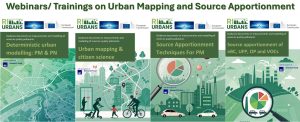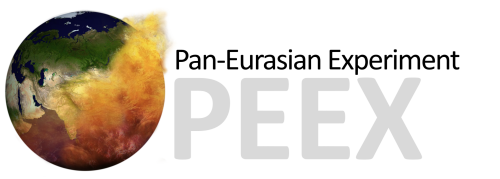Project Description

The RI-URBANS project (https://riurbans.eu) arranged and carried out two online webinars in September 2025 on application of the RI-URBANS selected Service Tools (STs) utilizing methodologies for urban mapping of air quality pollutants and source apportionment based on offline/online speciation and using receptor modelling.
The RI-URBANS Webinar on Urban Air Quality Mapping took place online on 19th September 2025 with about 80 participants. The webinar brought together participants for an insightful discussion on innovative approaches to urban air quality monitoring. The event featured presentations from RI-URBANS experts across Europe and introduced STs showcasing both mobile and stationary mapping methods – with/ without citizen participation -as well as the use of AI to unify monitoring data. The agenda included a general introduction, followed by introduction of the relevant RI-URBANS Service Tool for urban mapping, experiences with urban mapping, mobile mapping with and without citizens, combined stationary-mobile approaches, and interactive part with questions and answers.
The video recording of this webinar is publicly available.
The RI-URBANS Webinar on Source Apportionment took place online on 29th September 2025 with 220 participants. The webinar brought together participants from across Europe and beyond. The event highlighted innovative tools and strategies to identify and quantify pollution sources in urban environments as an essential step toward improving air quality and public health. The agenda included a general introduction, followed by introduction of the relevant RI-URBANS Service Tool for source apportionment, experiences with source apportionment, and interactive part with questions and answers. In particular, these included the source apportionment based on 24h resolution particulate matter chemistry data, high-time resolution organic aerosol measurements, high time resolution trace elements measurements, datasets with different time-resolution, as well as source apportionment of black carbon, ultrafine particles, oxidative potential, and volatile organic compounds.
The video recording of this webinar is publicly available.
See also more information about relevant RI-URBANS Service Tools at https://riurbans.eu/project/#service-tools
For “Methodologies for urban mapping of novel AQ pollutants”:
ST12: Deterministic urban modelling of fine PM and PNC (https://riurbans.eu/wp-content/uploads/2025/02/ST12.pdf)
ST13: Mapping ultrafine particles and citizen science (https://riurbans.eu/wp-content/uploads/2025/02/ST13.pdf)
For “Methodologies for source apportionment receptor modelling”:
ST10: Source apportionment of PM based on offline and online PM speciation (https://riurbans.eu/wp-content/uploads/2025/02/ST10.pdf)
ST11: Source apportionment of UFP, BC, OP and VOCs using receptor modelling (https://riurbans.eu/wp-content/uploads/2025/02/ST11.pdf)
News from RI-URBANS PCT team
